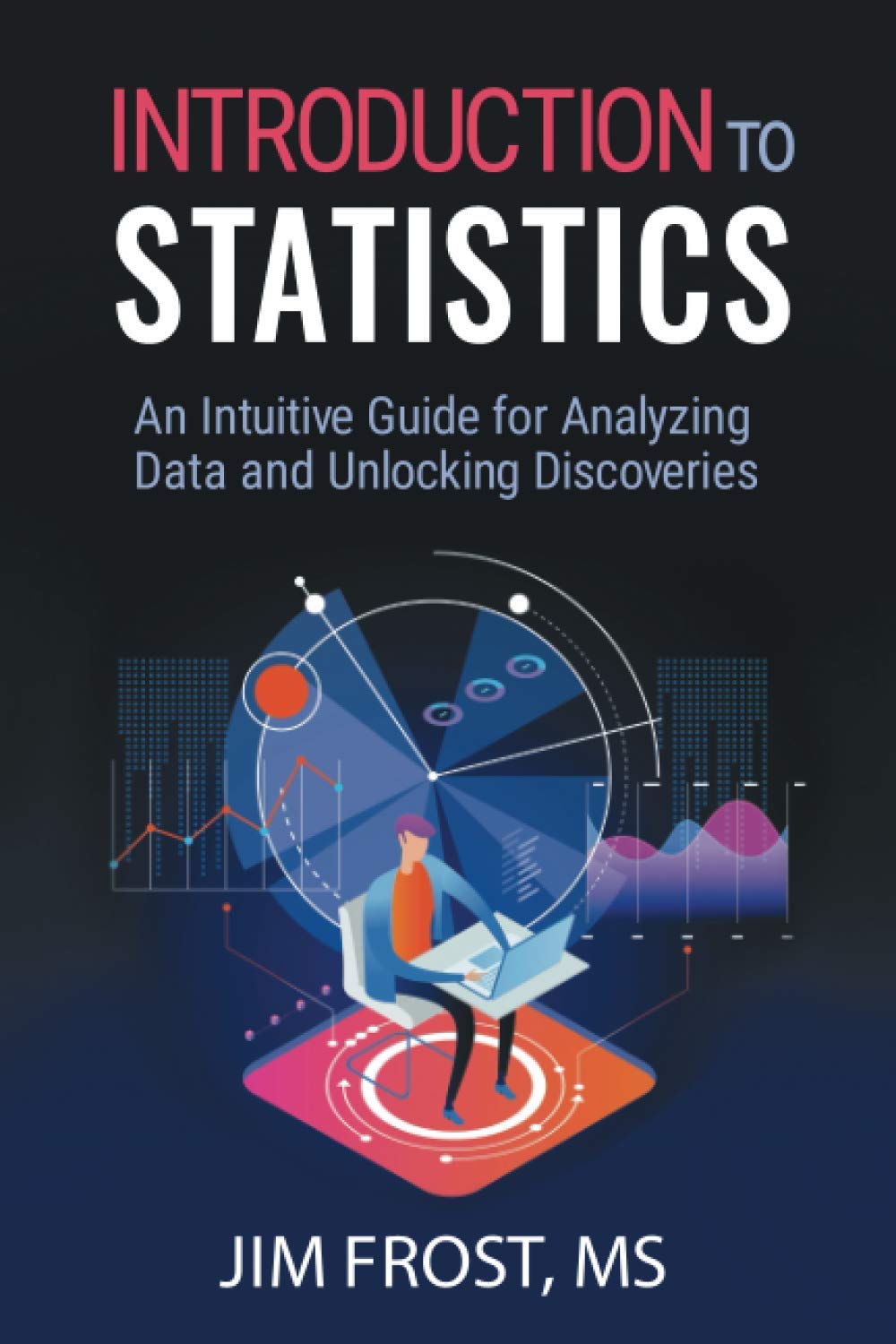The Importance of Statistics
The field of statistics is the science of learning from data. Statistical knowledge helps you use the proper methods to collect the data, employ the correct analyses, and effectively present the results. Statistics is a crucial process behind how we make discoveries in science, make decisions based on data, and make predictions. Statistics allows you to understand a subject much more deeply.
 In this post, I cover two main reasons why studying the field of statistics is crucial in modern society. First, statisticians are guides for learning from data and navigating common problems that can lead you to incorrect conclusions. Second, given the growing importance of decisions and opinions based on data, it’s crucial that you can critically assess the quality of analyses that others present to you.
In this post, I cover two main reasons why studying the field of statistics is crucial in modern society. First, statisticians are guides for learning from data and navigating common problems that can lead you to incorrect conclusions. Second, given the growing importance of decisions and opinions based on data, it’s crucial that you can critically assess the quality of analyses that others present to you.
Personally, I think statistics is an exciting field about the thrill of discovery, learning, and challenging your assumptions. Statistics facilitates the creation of new knowledge. Bit by bit, we push back the frontier of what is known. To learn more about my passion for statistics as an experienced statistician, read about my experiences and challenges early in my scientific research career.
For a contrast, read about qualitative research, which uses non-numeric data and does not perform statistical analyses.
Statistics Uses Numerical Evidence to Draw Valid Conclusions
Statistics are not just numbers and facts. You know, things like 4 out of 5 dentists prefer a specific toothpaste. Instead, it’s an array of knowledge and procedures that allow you to learn from data reliably. Statistics allow you to evaluate claims based on quantitative evidence and help you differentiate between reasonable and dubious conclusions. That aspect is particularly vital these days because data are so plentiful along with interpretations presented by people with unknown motivations.
Statisticians offer critical guidance in producing trustworthy analyses and predictions. Along the way, statisticians can help investigators avoid a wide variety of analytical traps.
When analysts use statistical procedures correctly, they tend to produce accurate results. In fact, statistical analyses account for uncertainty and error in the results. Statisticians ensure that all aspects of a study follow the appropriate methods to produce trustworthy results. These methods include:
- Producing reliable data.
- Analyzing the data appropriately.
- Drawing reasonable conclusions.
Statisticians Know How to Avoid Common Pitfalls
Using statistical analyses to produce findings for a study is the culmination of a long process. This process includes constructing the study design, selecting and measuring the variables, devising the sampling technique and sample size, cleaning the data, and determining the analysis methodology among numerous other issues. In some cases, you might want to take the raw data and use it to cluster observations in similar groups by using patterns in the data to help target your research or interventions. The overall quality of the results depends on the entire chain of events. A single weak link might produce unreliable results. The following list provides a small taste of potential problems and analytical errors that can affect a study.
Accuracy and Precision: Before collecting data, you must ascertain the accuracy and precision of your measurement system. After all, if you can’t trust your data, you can’t trust the results!
Biased samples: An incorrectly drawn sample can bias the conclusions from the start. For example, if a study uses human subjects, the subjects might be different than non-subjects in a way that affects the results. See: Populations, Parameters, and Samples in Inferential Statistics.
Overgeneralization: Findings from one population might not apply to another population. Unfortunately, it’s not necessarily clear what differentiates one population from another. Statistical inferences are always limited, and you must understand the limitations.
Causality: How do you determine when X causes a change in Y? Statisticians need tight standards to assume causality whereas others accept causal relationships more easily. When A precedes B, and A is correlated with B, many mistakenly believe it is a causal connection! However, you’ll need to use an experimental design that includes random assignment to assume confidently that the results represent causality. Learn how to determine whether you’re observing causation or correlation!
Incorrect analysis: Are you analyzing a multivariate study area with only one variable? Or, using an inadequate set of variables? Perhaps you’re assessing the mean when the median might be a better? Or, did you fit a linear relationship to data that are nonlinear? You can use a wide range of analytical tools, but not all of them are correct for a specific situation.
Violating the assumptions for an analysis: Most statistical analyses have assumptions. These assumptions often involve properties of the sample, variables, data, and the model. Adding to the complexity, you can waive some assumptions under specific conditions—sometimes thanks to the central limit theorem. When you violate an important assumption, you risk producing misleading results.
Data mining: Even when analysts do everything else correctly, they can produce falsely significant results by investigating a dataset for too long. When analysts conduct many tests, some will be statistically significant due to chance patterns in the data. Fastidious statisticians track the number of tests performed during a study and place the results in the proper context.
Numerous considerations must be correct to produce trustworthy conclusions. Unfortunately, there are many ways to mess up analyses and produce misleading results. Statisticians can guide others through this swamp!
Use Statistics to Make an Impact in Your Field
Statistical analyses are used in almost all fields to make sense of the vast amount of data that are available. Even if the field of statistics is not your primary field of study, it can help you make an impact in your chosen field. Chances are very high that you’ll need working knowledge of statistical methodology both to produce new findings in your field and to understand the work of others.
Conversely, as a statistician, there is a high demand for your skills in a wide variety of areas: universities, research labs, government, industry, etc. Furthermore, statistical careers often pay quite well. One of my favorite quotes about statistics is the following by John Tukey:
“The best thing about being a statistician is that you get to play in everyone else’s backyard.”
My interests are quite broad, and statistical knowledge provides the tools to understand all of them.
Lies, Damned Lies, and Statistics: Use Statistical Knowledge to Protect Yourself
I’m sure you’re familiar with the expression about damned lies and statistics, which was spread by Mark Twain among others. Is it true?
Unscrupulous analysts can use incorrect methodology to draw unwarranted conclusions. That long list of accidental pitfalls can quickly become a source of techniques to produce misleading analyses intentionally. But, how do you know? If you’re not familiar with statistics, these manipulations can be hard to detect. Statistical knowledge is the solution to this problem. Use it to protect yourself from manipulation and to react to information intelligently.
Learn how anecdotal evidence is the opposite of statistical methodology and how it can lead you astray!
Using statistics in a scientific study requires a lot of planning. To learn more about this process, read 5 Steps for Conducting Scientific Studies with Statistical Analyses.
The world today produces more data and more analyses designed to influence you than ever before. Are you ready for it?
If you’re learning about statistics and like the approach I use in my blog, check out my Introduction to Statistics book! It’s available at Amazon and other retailers.




